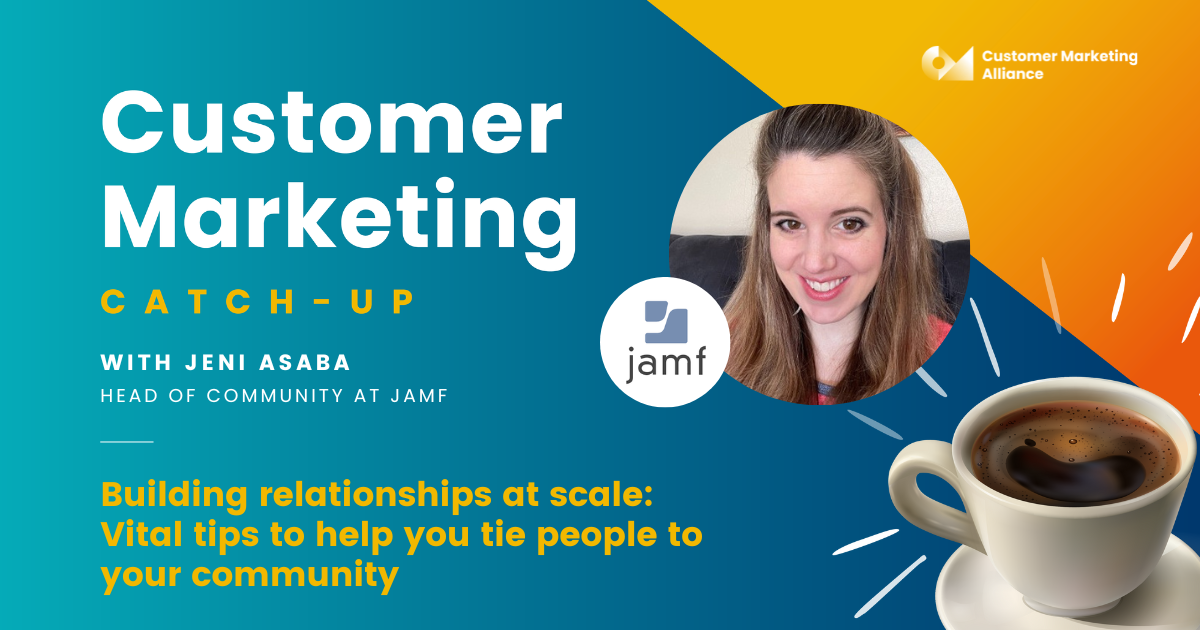How you approach, connect with, and build relationships with your customers is a vital part of the customer marketing machine. Picking when and where you connect with your customers is just as important as how you connect with them. In this article we’ll be going through:
- What engagement channels are
- Traditional vs emerging engagement channels
- How to choose the right mix of channels
Let’s get going.
What are engagement channels?
Engagement channels are the pathways that connect you with your audience, whether they're current customers or potential customers. They're the tools and platforms you use to interact and communicate with your target audience.
Think social media, email newsletters, events, and even good old-fashioned direct mail. These channels are your ticket to building relationships, sparking conversations, and ultimately getting people excited about what you're offering.
When used correctly, they're the things that help you cross over from just being a business to being a brand that people genuinely care about.

Traditional vs emerging engagement channels
Traditional engagement channels
Traditional engagement channels will most often include the following:
Email marketing
Email marketing probably remains one of the most common types of engagement marketing out there. It has a proven track record in achieving desired outcomes due to the longevity of this technique.
Emails offer a direct line of communication with your customers and allow you to send personalized and targeted messaging.
Downsides: Emails are very limited in the variety of interactions you can have with your customers; they’re generally a one-way form of communication and lack the real-time interaction of other forms of engagement. As it’s also one of the most popular forms of communication, your emails have more competition for the customers’ attention.
Social media platforms
Social media is also a staple to many companies’ engagement strategies. It has a far wider reach than email marketing and often hosts a more diverse audience. Social media has the perk of being more interactive than email marketing to, giving access to immediate feedback and engagement from your audience.
Downsides: Social media is a very involved channel of engagement and often requires you to post daily and at regular times. The dependency on visibility can take much of the control out of your hands when connecting with your existing customers as well as potential customers.
Events and webinars
Events and webinars maintain a strong presence in any engagement program. There is nothing more valuable than engaging with customers face-to-face, and lots of the important relationship-building interactions can happen far quicker and get you much further than any other online interaction.
Face-to-face engagement also offers you much more time to be able to open up more complex and nuanced discussions with your customers with less of the first of being misunderstood as through social media or email marketing.
Downsides: Planning, coordinating, and running these kinds of events are often the most time-intensive and resource-intensive – and are more of a financial investment than other forms of engagement strategies.
As a community-led business ourselves, we understand the importance of getting you and your peers into the same room. We've always got events coming up to do just that. Take a look at our event calendar here.
Direct mail
Direct mail is not very common nowadays due to the wider, and more easily accessible forms of engagement. But physical mail has its perks in that it’s a physical presence, with a more tangible impact, meaning it remains in the customers’ attention for longer than an email. It has a more tangible presence and allows for more personalized and localized campaigns.
Downsides: Physical mail has a downside in that it’s not the most sustainable with virtual engagement channels available, and it also has a much slower response time, resulting in longer lead times and limited tracking compared to digital channels.
Emerging engagement channels
Some newer channels include:
Chatbots and AI
Chatbots and AI are quickly becoming a popular tool for engagement. They offer the ability to provide instant support to your customers’ inquiries. The use of AI is able to handle large volumes of inquiries simultaneously in a way that is impossible for a human to keep up with.
Downsides: Chatbots can struggle to solve or interact with nuanced or complex interactions, and on top of that remove the valued human element when interacting with customers. Though it works for solving simple and short issues, it’s not a 1-2-1 replacement for human interactions.
User-generated content
What better way to improve interactions and engagement with your customers than having your own customers become a part of this engagement process? User-generated content improves and builds trust through peer-generated content, and it’s much less of a financial toll than other peer interaction-based channels (like webinars or events).
Downsides: With ChatGPT and other AI tools readily available, people are more likely to cut corners when producing their content. This makes quality control less consistent and removes the actual aim of having this content being truly user-generated. The voice of your customer is most important!
Personalized video messages
An alternative version of user-generated content, which is less likely to lean on AI, consider producing personalized video messaging. Having customer-produced videos adds a human connection with other customers, through emotional resonance.
Visual media is the name of the game, so even content produced yourself, is going to be more attention-grabbing and will capture viewer attention more effectively than text or static images.
Downsides: Video production is more time and resource-intensive. Producing these customized videos at scale will take priority over any other, so consider if it’s an investment you really want.
Community hubs
Community building is a fantastic way to prioritize customer relationships. When done well, community channels will fosters a sense of belonging and connection among like-minded individuals. Connecting your peers with each other will improve the overall trust in your brand, and will enable peer-to-peer support for your product.
Downsides: Without regular engagement, community hubs can run into the danger of becoming a bit of a ghost town. Once a community has dropped off your customers’ radar, it takes a lot of investment to get it back up and running. Like Social media, it’s another engagement channel that requires active management to maintain a positive and constructive environment.

Traditional channels offer reliability and familiarity and can have may have a broader reach, but require more upfront investment in terms of resources and infrastructure.
Emerging channels provide innovation and potential for deeper engagement. They often offer more targeted and personalized interactions and are often more cost-effective.
Both types of channels have their strengths and limitations, but the most effective strategies will implement a combination of both traditional and emerging channels and will have them tailored to the specific needs and preferences of the target audience.

How to choose the right mix of engagement channels
Choosing the right mix of engagement channels for customer marketers involves a strategic approach tailored to the audience, objectives, and resources available. Here are our key steps you must consider:
1 - Audience analysis
- Understand your target audience's demographics, preferences, and behaviors.
- Identify which channels your audience frequents.
- Consider factors such as age, location, industry, and level of tech-savviness.
2 - Goal setting
- Define clear objectives for your engagement strategy, such as increasing brand awareness, driving conversions, or fostering customer loyalty.
- Align engagement channel selection with these objectives to ensure coherence and effectiveness.
3 - Platform analysis and evaluation
Evaluate the strengths and weaknesses of various engagement channels, including traditional and emerging platforms.
- Consider factors such as reach, engagement potential, cost-effectiveness, and alignment with your audience and brand values.
4 - Competitive analysis
- Research and analyze the engagement strategies of competitors and industry leaders.
- Identify which channels they’re using successfully to engage with their audience.
5 - Resource assessment
- Determine which channels are feasible and sustainable within your resource constraints and prioritize accordingly.
6 - Cross-channel integration strategy
- Develop a strategy for integrating multiple engagement channels to create a cohesive and seamless customer experience.
- Identify opportunities for cross-promotion, consistency in messaging, and synergy between channels to maximize impact.
The difference between customer and community engagement
Our guide to customer and community engagement is an invaluable resource for anyone looking to understand and enhance their customer and community engagement strategy.
Featuring expert advice, definitions, how-tos, and case studies, this playbook is your guide to improving the way your community-led and customer marketing teams collaborate for growth.





